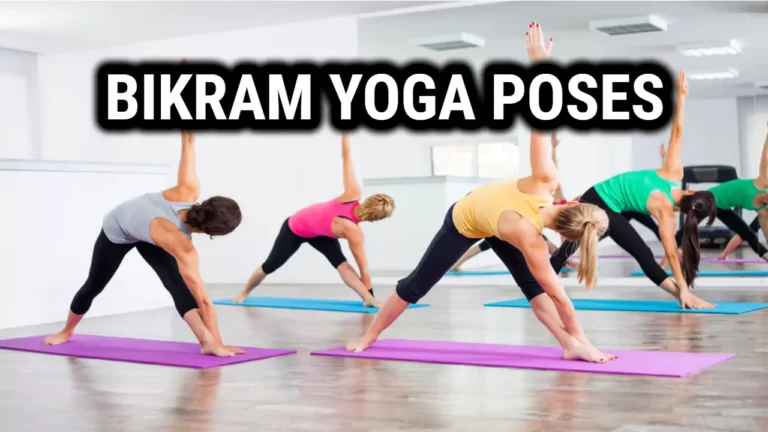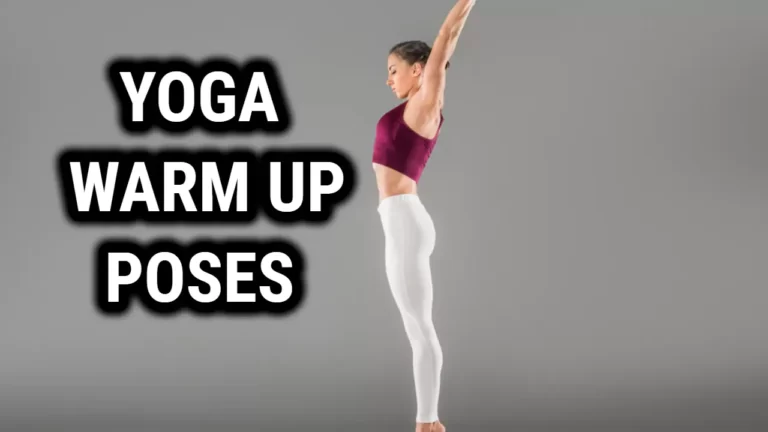What Are The Best Advices For A Beginner In Yoga

Congratulations on taking the first step towards starting your yoga journey! As a beginner, it’s natural to feel overwhelmed and unsure about where to begin. But with the right guidance and mindset, you can easily navigate through the world of yoga and reap its numerous benefits.
In this article, we’ll provide you with some essential tips and advice that will help you kickstart your yoga practice. From understanding the basics of yoga to investing in quality gear, we’ve got you covered.
So, take a deep breath, relax, and read on to discover the best advice for a beginner in yoga.
Key Takeaways
- Proper alignment and breathing techniques are important for beginners to understand.
- Investing in quality yoga gear can enhance the practice and provide additional support.
- Practicing regularly is crucial for improving yoga practice.
- Mindful breathing, eating, communication, and work can improve overall well-being.
Understanding the Basics of Yoga
You’ll want to start by understanding the basics of yoga. This includes proper alignment and breathing techniques. Yoga poses can be intimidating for beginners, but understanding how to properly align your body can help prevent injury and maximize the benefits of each pose.
The importance of alignment is often emphasized in yoga classes, as it helps to create a strong foundation for the body and allows for a deeper connection to the breath. Breathing techniques are also a crucial aspect of yoga. Learning how to breathe properly can help calm the mind and increase the benefits of each pose.
It’s common for beginners to hold their breath or take shallow breaths during poses, but this can lead to a less effective practice. Instructors will often guide students through different breathing techniques, such as ujjayi breath or alternate nostril breathing. Understanding these techniques and incorporating them into your practice can greatly enhance your experience.
Additionally, it’s important to be aware of common mistakes to avoid, such as overexertion or improper form, in order to prevent injury and get the most out of your practice.
1. Finding the Right Yoga Style for You
To truly immerse yourself in the world of yoga, it’s important to explore the various styles available to you and find the one that resonates with your body and mind. Yoga style considerations should include your personal preferences and body type differences, as well as the qualifications of your instructor.
Here are a few tips to help you find the right yoga style for you:
- Consider your fitness level and physical abilities. Some yoga styles may be too intense for beginners, while others may be too gentle for more advanced practitioners.
- Think about your personal goals for practicing yoga. Are you looking to build strength and flexibility, reduce stress and anxiety, or simply improve your overall health and well-being?
- Try out different styles and classes to see what feels best for you. Don’t be afraid to experiment and explore different options to find the perfect fit.
Remember, incorporating variety into your yoga practice can provide even more benefits for your mind and body. So don’t be afraid to mix it up and try new styles and classes to keep your practice fresh and engaging. With a little exploration and experimentation, you’ll find the perfect yoga style to suit your needs and help you achieve your goals.
2. Investing in Quality Yoga Gear
Investing in quality yoga gear can enhance your practice and provide additional support and comfort during your poses, allowing you to fully immerse yourself in the experience. While it may be tempting to go for budget options, investing in higher quality gear can actually save you money in the long run as they tend to last longer and provide better support.
Look for eco-friendly options made from sustainable materials such as bamboo, organic cotton, or recycled plastic. Aside from the essentials such as a mat and comfortable clothing, there are other accessories that can make your practice more enjoyable such as yoga blocks, straps, and bolsters. These tools can aid in proper alignment and deepen your stretches.
If you’re on a tight budget, consider searching for deals online or even DIY alternatives such as using a towel instead of a mat. Ultimately, investing in quality yoga gear can help you get the most out of your practice, so don’t be afraid to splurge a little!
3. Choosing the Right Yoga Mat
Feeling comfortable and stable during your yoga practice is crucial, and the right yoga mat can make all the difference.
When choosing the right yoga mat for you, consider the thickness options available. If you prefer more cushion for your joints, a thicker mat may be the way to go. However, if you’re looking for a more stable surface for balance poses, a thinner mat may suit you better.
Additionally, look for a non-slip surface to ensure your safety during your practice.
If eco-friendliness is a concern for you, there are many eco-friendly options available on the market. These mats are made from sustainable materials such as natural rubber, cork, or recycled materials.
Budget-friendly options are also available, but be careful not to sacrifice quality for price.
Lastly, consider portability features if you plan on taking your mat with you to classes or on travels. A lightweight and easy-to-roll mat can be a great investment for a yogi on the go.
4. Setting Realistic Goals
Setting realistic goals is key for progress in your yoga practice, so it’s important to establish attainable milestones for yourself. Having realistic expectations will help you avoid frustration and disappointment.
Here are some goal setting strategies that might help you get started:
- Start small: Don’t set goals that are too ambitious or unrealistic. Instead, start with small goals that are achievable, such as holding a pose for a few extra seconds or attending one extra class per week.
- Track your progress: Keeping track of your progress can help you stay motivated. Consider keeping a journal or using a yoga app to track your progress.
- Try different motivation techniques: Everyone is different, and what motivates one person may not work for another. Experiment with different techniques, such as visualizing your progress or rewarding yourself for achieving your goals.
- Overcoming plateaus: It’s natural to hit a plateau in your practice. When this happens, try mixing up your routine or trying a new challenge to keep things interesting.
Remember, progress is not always linear, and setbacks are a natural part of the process. Be patient with yourself and celebrate your achievements, no matter how small they may seem.
5. Focusing on Your Breath
Take a deep breath and let your focus turn to the rhythm of your breath as you move through your yoga practice. Breath awareness is an integral part of yoga, and it’s essential for beginners to focus on their breathing.
Pranayama techniques, or breath control exercises, help to regulate the breath and enhance its benefits. Mindful breathing can also reduce stress and anxiety, allowing you to stay present and centered during your practice. Breathing exercises can be incorporated into your yoga practice, helping you to deepen your breath and enhance your practice.
One of the simplest breathing exercises is to inhale for a count of four, hold for a count of four, and exhale for a count of four. This exercise helps to slow down your breath and calm your mind.
Focusing on your breath during your yoga practice can help you to connect with your body and stay present in the moment, which is a key aspect of yoga.
6. Practicing Regularly
Practicing regularly is crucial for improving your yoga practice and achieving your goals. Consistency benefits your body and mind by allowing for steady progress and growth in flexibility, strength, and mindfulness.
It’s important to make time for yoga in your schedule, even if it means waking up a little earlier or skipping that extra episode on Netflix. To stay motivated, set achievable goals for yourself and track your progress. Celebrate small victories along the way, like holding a pose for a few seconds longer or feeling more relaxed during savasana.
Remember that obstacles may arise, but overcoming them can lead to even greater progress and a deeper connection to your practice. With dedication and perseverance, practicing yoga regularly will become a rewarding and fulfilling part of your daily routine.
7. Starting Slowly and Progressing Gradually
Starting slowly and progressing gradually can be a gentle and empowering way to ease into your yoga practice. Slow progression allows you to build a foundation and develop a mindful movement that will support your practice in the long run.
It’s important to remember that yoga is not a competition, and there’s no rush to master all the poses in one session. Gradual improvement is the key to a sustainable practice.
By taking a gentle approach, you can avoid injuries and fatigue, and instead focus on the connection between your body and breath. This will help you develop a deeper understanding of your body and its needs, which will ultimately lead to a more fulfilling practice.
Remember to be patient with yourself, and trust that with time and dedication, you’ll progress at your own pace.
8. Listening to Your Body
Now that you’ve started slowly and progressed gradually, it’s time to focus on the importance of listening to your body. This means developing body awareness and practicing intuitive movement. You should always be mindful of how your body is feeling during your yoga practice and adjust accordingly.
To help you navigate this, here are some tips to keep in mind:
- Practice self-compassion and avoid pushing yourself beyond your limits.
- Adapt poses as needed to accommodate any injuries or physical limitations you may have.
- Pay attention to any sensations or discomfort in your body and adjust or avoid poses accordingly.
- Prioritize avoiding injury by not forcing your body into positions it’s not ready for.
By practicing body awareness and intuitive movement, and prioritizing your physical well-being, you can ensure a safe and fulfilling yoga practice.
Remember, yoga is about finding balance and harmony within yourself, not pushing yourself to the point of injury or discomfort.
9. Seeking Guidance from a Qualified Instructor
To maximize your potential and ensure proper form, it’s essential to seek guidance from a qualified yoga instructor. While practicing yoga at home or in a group class can be beneficial, private sessions with an instructor can help take your practice to the next level.
These one-on-one sessions allow for personalized attention and adjustments to your form, as well as the opportunity to ask questions and receive individualized feedback. In addition to the benefits of private sessions, it’s important to communicate openly with your instructor.
Let them know about any injuries or limitations you may have so they can tailor the practice to your needs. Building trust with your instructor is also crucial, as they can guide you towards progress while ensuring your safety and comfort.
By customizing your practice with the help of a qualified instructor, you can achieve your goals and experience the full benefits of yoga.
10. Modifying Poses for Your Body
You can make yoga poses work for your body by modifying them to fit your needs and abilities. Alignment tips are crucial in ensuring that you’re doing the poses correctly and safely. For example, in Downward-Facing Dog, make sure your hands are shoulder-width apart and your feet are hip-width apart. This will help you distribute your weight evenly and avoid putting unnecessary pressure on your wrists and knees.
Prop usage is also handy in modifying poses. Blocks, straps, and bolsters can help you achieve proper alignment and provide support for your body. If you have an injury, it’s essential to modify poses to prevent further damage. For instance, if you have a knee injury, avoid poses that put too much pressure on your knees, like Lotus Pose. Instead, opt for poses like Warrior II, which is gentler on the knees.
Adapting to different body types is also essential. If you’re taller or shorter than average, you may need to adjust poses to fit your body’s proportions. Remember that yoga isn’t a competition, and there’s no one-size-fits-all approach. Modify poses to suit your needs, and you’ll reap the benefits of a safe and fulfilling practice.
Modifying poses is an essential aspect of a safe and enjoyable yoga practice. Alignment tips, prop usage, injury prevention, modifications for injuries, and adapting to different body types are all crucial components of modifying poses. Remember to listen to your body and make the necessary adjustments to ensure that you’re doing the poses correctly and safely. With these modifications, you’ll be able to enjoy the physical, mental, and emotional benefits of yoga.
11. Incorporating Meditation into Your Practice
When incorporating meditation into your practice, take a moment to settle into a comfortable seated position and allow yourself to let go of any distractions or thoughts.
Begin by focusing on your breath, taking deep, full breaths in through your nose and out through your mouth. This breathwork benefits not only your physical body but also helps to calm the mind and reduce stress.
As you continue to focus on your breath, begin to incorporate mindfulness techniques such as body scan or visualization. These techniques can help you find stillness and quiet the mind.
If distractions arise, simply acknowledge them and bring your focus back to your breath. You may also choose to incorporate mantras or affirmations into your meditation practice, repeating them silently to yourself to help stay focused and centered.
With regular practice, incorporating meditation into your yoga practice can have profound benefits for both body and mind.
12. Staying Hydrated
Staying hydrated is crucial for maintaining a healthy and balanced yoga practice, as it helps to flush out toxins and keep the body functioning properly. Here are some important things to keep in mind when it comes to the importance of hydration in yoga:
- Pre-yoga hydration routine: Make sure to drink water before your yoga practice. Ideally, you should drink at least 16-20 ounces of water 2-3 hours before class, and another 8-10 ounces 10-20 minutes before starting. This will help to ensure that your body is properly hydrated and ready for the physical demands of yoga.
- Benefits of staying hydrated during yoga: By staying hydrated during your practice, you’ll be able to perform postures with greater ease and flexibility, as well as prevent muscle cramps and fatigue. Additionally, staying hydrated can help to regulate your body temperature, which is especially important in hot yoga classes.
- Dehydration symptoms to watch out for: Signs of dehydration include dizziness, nausea, headache, muscle cramps, and fatigue. If you experience any of these symptoms during your yoga practice, stop and take a break to rehydrate.
Hydration tips for hot yoga:
- Drink plenty of water before, during, and after class.
- Consider using an electrolyte supplement to replenish lost fluids and minerals.
- Take breaks as needed and rest in child’s pose if you feel lightheaded or dizzy. Remember, it’s always better to take care of your body and prevent dehydration than to push yourself too hard and risk injury.
13. Eating a Balanced Diet
Maintaining a balanced diet is essential for fueling your body with the nutrients it needs to support a healthy and sustainable yoga practice. A balanced diet means consuming a variety of foods from different food groups, such as fruits, vegetables, whole grains, lean proteins, and healthy fats.
It’s important to pay attention to your nutrient intake and ensure that you’re getting enough of the essential vitamins and minerals that your body needs. Portion control is also an important aspect of maintaining a balanced diet. It’s easy to overeat or under-eat when you’re not mindful of your portions.
Try to listen to your body’s hunger and fullness cues and eat until you feel satisfied, but not stuffed. Practice healthy habits like cooking at home, choosing whole foods over processed ones, and limiting your intake of sugary, fatty, or salty snacks.
Remember to practice mindful eating and enjoy your food slowly, savoring each bite and appreciating the nourishment it provides for your body.
14. Getting Adequate Rest and Recovery Time
Make sure you’re giving yourself enough time to rest and recover between yoga sessions, so that your body can repair and strengthen itself. Adequate rest and recovery time is just as important as the actual yoga practice. Here are some tips to help you balance your yoga practice with rest and recovery:
- Prioritize getting enough sleep each night, as sleep is essential for overall health and wellness.
- Incorporate restorative yoga into your practice, which focuses on gentle poses and deep relaxation to help the body recover.
- Listen to your body and take breaks as needed, especially if you’re feeling fatigued or sore.
- Try to balance the intensity of your yoga practice with restful activities, such as meditation or gentle stretching.
- Remember that rest is an important part of the mind-body connection, allowing you to restore both your physical and mental energy.
By taking the time to rest and recover between yoga sessions, you’ll be able to approach your practice with more focus and energy. So make sure to prioritize rest and recovery as a crucial part of your overall yoga journey.
15. Practicing Mindfulness in Everyday Life
Incorporate mindfulness into your daily routine by taking a few moments to focus on your breath and observe your surroundings, allowing yourself to fully engage with the present moment.
This can be done in various ways, such as practicing mindful breathing, mindful walking, and even mindful eating.
When practicing mindful breathing, take a few deep breaths and focus solely on the sensation of the air entering and leaving your body. This simple exercise can help bring you back to the present moment and reduce stress and anxiety.
Mindful eating involves taking the time to fully savor and appreciate your food, paying attention to each bite and the flavors and textures in your mouth.
Mindful communication involves being fully present and engaged in conversations with others, actively listening and responding with intention.
Lastly, mindful work involves focusing on one task at a time, avoiding distractions and multitasking.
By incorporating mindfulness into these aspects of your life, you can improve your overall well-being and cultivate a sense of calm and clarity.
16. Surrounding Yourself with a Supportive Community
Being surrounded by a supportive community can feel like a warm hug on a cold day, providing comfort and encouragement when you need it most. Yoga is a personal practice, but it doesn’t have to be a solitary one. Building connections with others who share the same interest in yoga can be a powerful tool in your journey towards growth and self-discovery.
Here are some ways that community support can enhance your yoga practice:
- Accountability partners can help you stay committed to your practice and push you to reach your goals.
- Group classes offer a space for you to learn from experienced teachers and connect with other students.
- Finding like-minded individuals can help you feel a sense of belonging and acceptance.
- Supportive friends can offer a listening ear and a shoulder to lean on when you need it.
- Being part of a community can provide a sense of purpose and motivation to keep showing up on the mat.
So don’t be afraid to reach out and connect with others in your yoga journey.
17. Staying Patient and Persistent
You’re going to feel frustrated and discouraged at times, but staying patient and persistent in your yoga practice will be worth it in the end.
Practicing acceptance and understanding that progress takes time is key. Remember that everyone has their own limitations and struggles, and that’s okay.
It’s important to overcome frustration and not let it discourage you from continuing your practice. Balancing effort and ease is also crucial. Don’t push yourself too hard, but don’t give up too easily either.
Finding that middle ground and listening to your body will help you progress without causing injury or burnout. As you continue on your yoga journey, you’ll begin to find inner peace and a deeper connection with yourself.
So, keep at it and don’t give up! Remember that the benefits of yoga go far beyond physical strength and flexibility.
18. Celebrating Your Progress and Achievements
Take a moment to reflect on how far you’ve come in your yoga practice and celebrate your progress and achievements. Celebrating milestones is an important part of staying motivated and inspired.
Take note of the poses you’ve mastered, the ones you’ve improved on, and the ones you’ve just learned. Tracking progress allows you to see how far you’ve come and the effort you’ve put in. It can be as simple as taking a picture of yourself every month or writing down your accomplishments in a journal.
In addition to tracking progress, it’s important to practice positive self-talk. Acknowledge your strengths and progress, and focus on what you can do rather than what you can’t. Rewarding yourself for achieving your goals can also be a great motivator. Treat yourself to a new yoga mat, a massage, or a healthy meal.
Finding motivation can be challenging, but by celebrating your progress and achievements, you can cultivate a positive mindset and stay inspired to continue your yoga journey.
19. Embracing the Journey, Not Just the Destination
Embracing the journey of your yoga practice is essential for long-term growth and self-discovery. While it’s important to set goals and work towards them, it’s equally important to focus on the present moment and enjoy the process.
Mindful practice allows you to connect with your body and breath, and tune in to your inner thoughts and emotions. By taking the time to self-reflect and observe your practice, you can identify areas of improvement and celebrate your progress.
It’s also important to embrace imperfection and let go of the idea of a ‘perfect’ yoga practice. Every body is different, and every practice is unique. Cultivating gratitude for what your body can do, rather than focusing on what it can’t, can help you find joy in your practice.
Remember that yoga is a lifelong journey, and there will always be something new to learn and discover. So, enjoy the ride, and have fun exploring the limitless possibilities of your mind and body through yoga.
20. Continuing to Learn and Grow in Your Practice
By exploring new poses and challenging yourself in your practice, you’ll continue to evolve and grow in your yoga journey. Continual education is key in deepening your understanding of the practice and expanding your repertoire of poses.
Attend workshops, read books, and watch online tutorials to learn new techniques and variations. This will not only keep your practice fresh and exciting but will also enhance your knowledge of the physical and spiritual aspects of yoga.
In addition to this, exploring variations of familiar poses can help you discover new strengths and areas for improvement. Don’t be afraid to modify poses or try more advanced variations, but always listen to your body and avoid pushing yourself too far.
Finding motivation can be difficult at times but setting intentions before each practice can help you stay focused and committed. Remember to avoid comparison and embrace your own unique journey, as yoga is a personal practice and everyone’s journey is different.
Frequently Asked Questions
How do I deal with distractions during my yoga practice?
To deal with distractions during your yoga practice, use breath control and mental focus. Minimize environmental factors by practicing in a quiet, tidy space. Address physical discomfort with modifications. Manage time by setting aside a regular practice slot.
Can meditation be practiced without doing yoga?
Yes, meditation can be practiced without doing yoga. It offers numerous benefits such as stress relief, inner peace, and improved mindfulness practices. There are different techniques to choose from, so find what works best for you.
How can I stay motivated to continue practicing yoga regularly?
To stay motivated in your yoga practice, try setting goals, finding a buddy to practice with, tracking your progress, exploring different styles, and creating a routine. Consistency and finding what works for you will keep you going.
Is it necessary to join a yoga studio or can I practice at home?
You don’t have to join a yoga studio to reap the benefits of yoga. You can practice at home with minimal equipment. Look up online classes and follow safety tips. Create a peaceful environment and make it a habit.
What are some common mistakes beginners make in yoga and how can they be avoided?
To avoid common mistakes, focus on proper alignment and breathing techniques. Prevent overexertion by listening to your body and choosing the right class. Connect your mind and body, and be patient with yourself as a beginner.
Conclusion
Remember, practicing yoga isn’t just about the physical poses, but also about the mental and spiritual aspects. Keep in mind the basics of yoga and find the style that suits you best.
Invest in quality gear, especially a good yoga mat, to ensure your comfort and safety during practice. Setting realistic goals and staying patient and persistent are key to progress in yoga. Celebrate your achievements along the way and embrace the journey, not just the destination.
Remember that learning and growing in your practice is a continuous process. With dedication and commitment, you can experience the many benefits of yoga and transform your mind, body, and soul.
Namaste.






